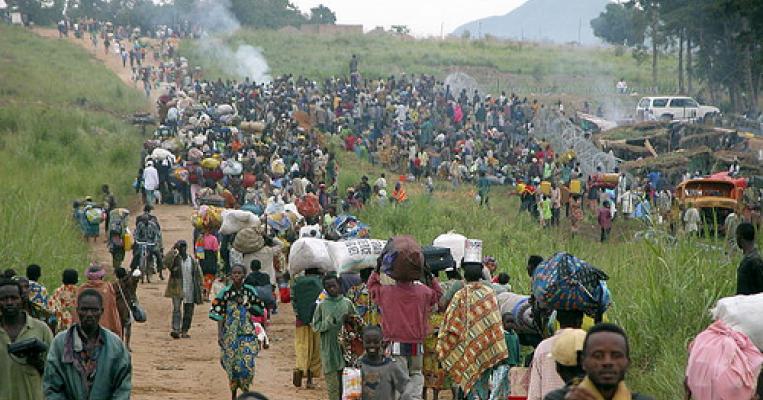
Bad Medicine for the Congo
THE SOURCE: “Dangerous Tales: Dominant Narratives on the Congo and Their Unintended Consequences” by Séverine Autesserre, in African Affairs, April 2012.

THE SOURCE: “Dangerous Tales: Dominant Narratives on the Congo and Their Unintended Consequences” by Séverine Autesserre, in African Affairs, April 2012.
Multilateral interventions rarely go as planned. The one in the Democratic Republic of the Congo, where nine years of war beginning in 1994 left millions dead, is no exception. The Congo is the largest sub-Saharan African country by area, and its 74 million people belong to more than 200 ethnic groups. Despite the odds, UN peacekeepers—in concert with the African Union and other organizations—arrived in 1999 and eventually brought a measure of security to most of the country. In 2006, they oversaw multiparty elections. Yet Séverine Autesserre, a political scientist at Columbia University, contends that the outsiders have made life worse for many Congolese.
The interveners, particularly Westerners, erroneously believed that nefarious warlords profiting from the country’s rich mineral deposits (principally gold and diamonds, as well as coltan, a metallic ore) were responsible for the violence. Their solution was straightforward: to expand the fragile Congolese state’s power into the country’s troubled eastern region, and to ban mining that benefited armed groups.
But only some of the violence is directly related to so-called conflict minerals, according to Autesserre. The Congo is riven with corruption and intense “grassroots antagonisms over land and power.” To focus on mining is to overlook these problems.
Stringent international requirements for mineral “supply chain verification”—including a provision in the Dodd-Frank Wall Street Reform and Consumer Protection Act of 2010—are depriving many ordinary Congolese of their livelihoods while leaving untouched the corrupt military leaders who control rural areas.
Other international prescriptions have also backfired. Building roads and bases for underpaid and corrupt security forces in the east “merely results in replacing one group of perpetrators (foreign and Congolese rebel groups) with another.” It’s little surprise that more Congolese fled their homes out of fear for their security in 2010 than in 2006. Or that in 2011 the Congo slipped to the very bottom of the UN’s Human Development Index.
The West and the UN take note, but only selectively. Rape is widespread and monopolizes the outsiders’ concerns. Congolese struggle to “draw the attention of the media or donors to horrific events that have no sexual dimension.” Not enough is done to combat other abuses, such as forced labor and the conscription of child soldiers.
Rebels have learned to see rape as a quick ticket to the big time. In 2010, Ntabo Ntaberi Sheka, a warlord in the east, “ordered his soldiers to systematically rape women, instead of just looting and beating people as they usually do, because he wanted to . . . be invited to the negotiating table.” He got his wish.
Autesserre does credit the international intervention with “re-establishing peace, albeit a precarious one, over most of the Congolese territory.” But it’s time for a rethink. The international community ought to drop its focus on a single cause (conflict minerals), a single symptom (sexual violence), and a single solution (expanding the state). Instead, the interveners should ensure that Congolese security forces receive their salaries. They should attend to the causes of widespread rape, such as poverty, a broken justice system, and warped gender roles. And they should put an end to the simplistic narratives that precipitated the intervention’s mistakes in the first place.